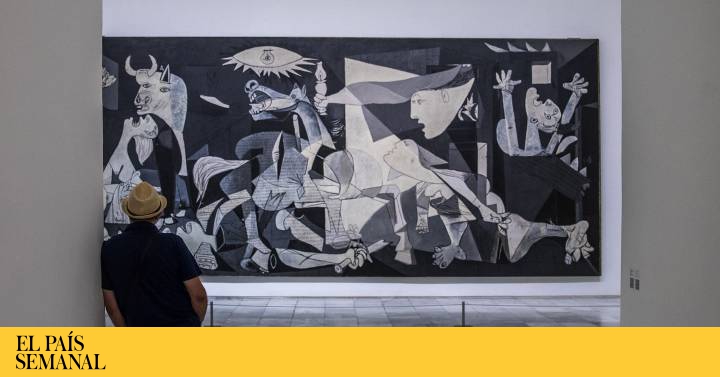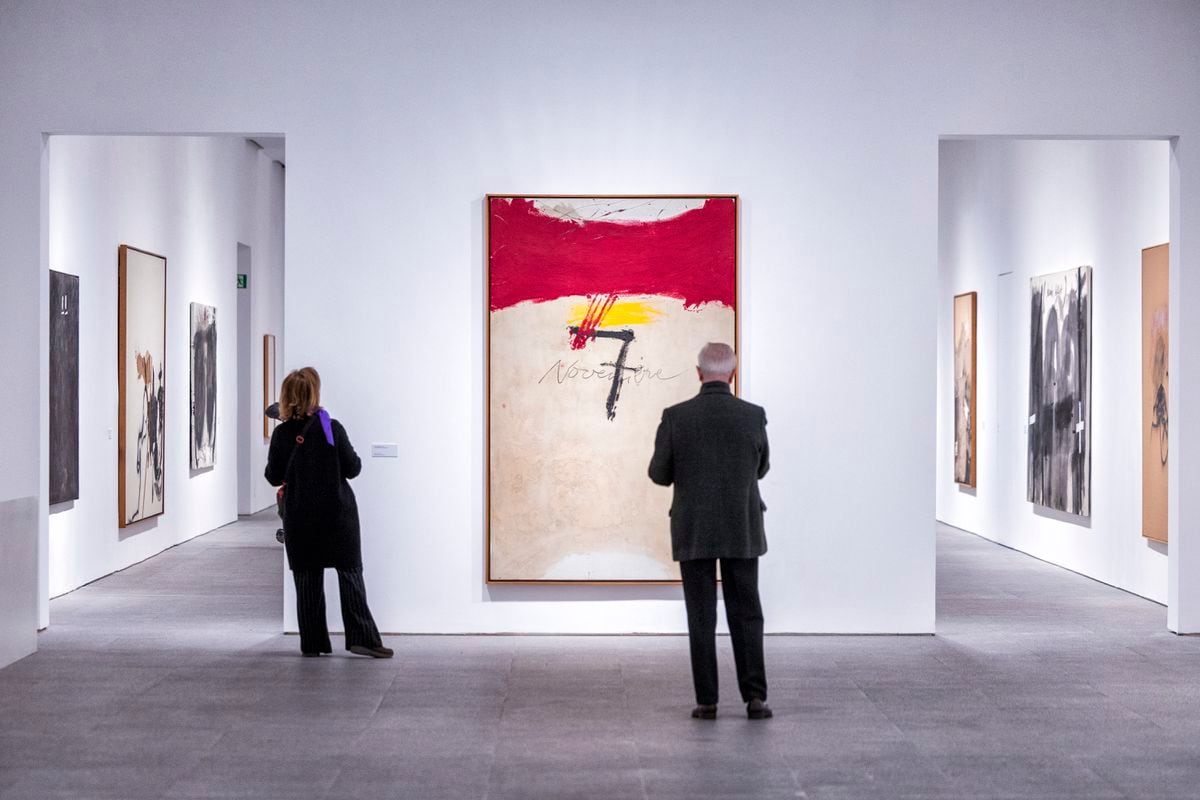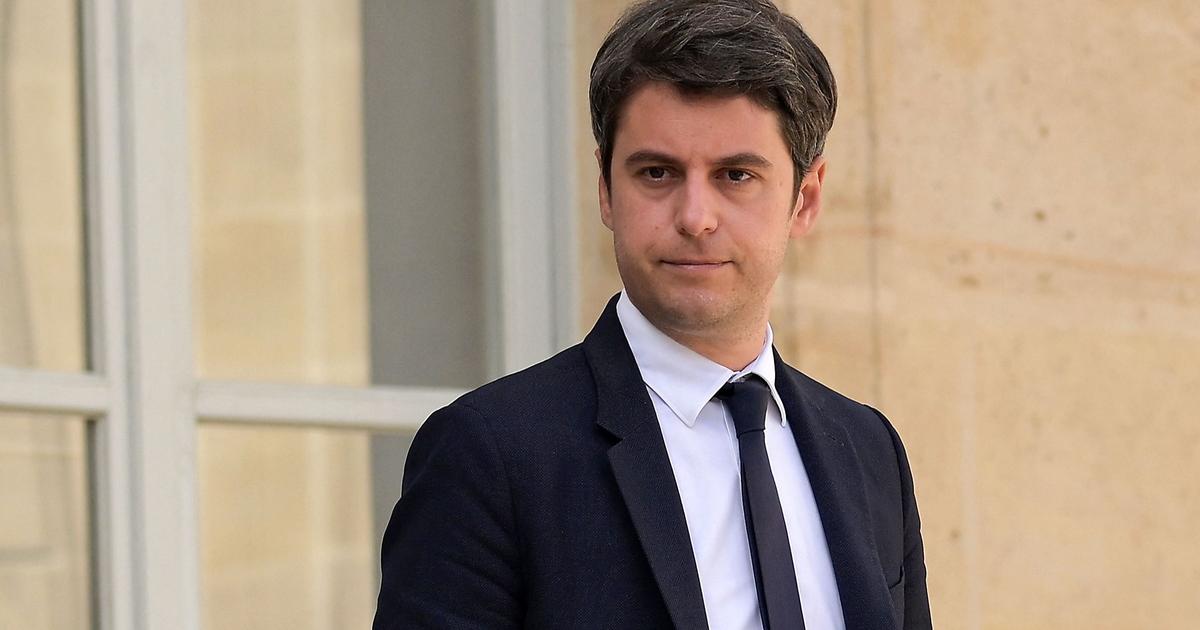The director of the Reina Sofía National Museum, Manuel Borja-Villel, could not imagine that something like the catastrophe / covid would indelibly mark the final stretch of his mandate.
In addition to the many duties that he already had on his table in the 30th anniversary year, he will have to dedicate the three that remain to him as director, rather than thinking and doing, rethinking and inventing.
Rethink and reinvent a museum.
A museum that definitively erases old and obsolete practices from its DNA and that has full validity and full meaning in the new times: the post-pandemic times.
These are, explained by some of the top managers of the Reina, the main elements of discussion and change that are already heard in the offices and in the exhibition rooms of the reference center for modern and contemporary art in Spain.
TOWARDS WHICH MUSEUM?
“Clearly there has to be a post-covid Reina Sofía.
If not, something is wrong.
The museum machinery has stopped, in part due to this catastrophe that forces us to react.
We have to reinvent ourselves, but not only because of what has happened.
Reinvention must be constant, permanent, that is the challenge of this museum ”, Manuel Borja-Villel puts forward.
It is true that he is not exactly suspected of having waited for a crisis of this caliber to modify inertia, turn things over to tachycardia (basically from his closest collaborators) and apply personal and non-transferable criteria to the management of the Reina.
So much so that there have been those who have accused him on occasions of promoting an author's museum.
Some of his ideas about what the Reina Sofía is or should be and where it should direct its steps, and more broadly where any public museum should go, can be found in the chapter entitled 'Towards a new institutionality' of its revealing book Magnetic Fields, recently published by Arcadia.
Their keyword for a long time - and in today's circumstances much longer - is "sustainability."
“It is clear that neither we nor others have made museums sustainable.
But sustainability and ecology are here to stay.
Likewise, sustainability will not consist of spending I don't know how many millions in new buildings or in making exhibitions that are merely shows.
Anyway, it will no longer matter that so many people come and sustainability will occur in a different way, perhaps working more with the collections themselves.
Among other things, because also less works will be loaned between museums ”, explains the director.
Soledad Liaño, curator and coordinator of exhibitions at the Museo Reina Sofía.
Samuel Sanchez
“What is a museum?”, Mabel Tapia, deputy director of the center for just over a year, wonders in one of the large offices of the Nouvel Building.
“Museums were born as a hegemonic way of affirming 'this is art', as a kind of sacralization of culture that somehow closes the doors to other forms.
And that affirmative form that denies other forms is what is in crisis right now, so what we propose now at the Reina is to move from that affirmative form to an interrogative form, how the museum can be a place to question from the artistic even the social ”, he argues.
The social, the political ... and even the ideological?
Concepts that have populated and populate its rooms such as feminism, inequality, republic, exile, anti-racism, activism and
artivism
(case of the magnificent exhibition starring in 2012 by the German Hans Haacke, champion of the current of institutional criticism),
queer
culture
... Do you make the Reina Sofía a museum of the left?
The director's response: “What is not is partisan.
But if all these concepts are on the left, then yes.
If the left is to want to change an unjust and dehumanized world, yes, it is a museum of the left.
What we will never do is examine the ideology of the artists.
Dalí was not very left-wing.
Ignacio Gómez de Liaño, either, but his work transforms the way of understanding the world ”.
Mabel Tapia, deputy director of the Reina Sofía.
Samuel Sanchez
In fact, the health, social and economic crisis caused by the pandemic has further boosted one of the crown jewels in the action of the current museum management team: the
Located Museum
project
,
an experience that started two years ago and which Mabel Tapia explains: “It consists of resuming and reinforcing a dialogue that was closed with the Lavapiés-Atocha neighborhood and by extension with the city of Madrid.
The neighborhood community was very reluctant to the museum, not only as an engine of gentrification and tourism, but because it considered that the Reina was directly turning his back on it.
There has been a sustained work of dialogue and projects in common with neighborhood associations, cultural centers, etc. ”.
'BLOCKBUSTER' EXHIBITIONS: YES OR NO?
Is the museum model based on the organization of exhibitions-events capable of attracting 700,000 visitors coming to an end, such as the Dalí model that hosted the Reina Sofía in 2013?
Is it possible to think that, once the pandemic and its impact on people visiting museums are over, everything will go back to what it was and the big
blockbuster
shows will return
?
“I think we are going to have to deal with a closer scene.
In the short and medium term we are doomed to renounce those great exhibitions and in the long term who knows, maybe it will be something that will come to stay, and it seems sensible ", admits Soledad Liaño, curator of important exhibitions at the Reina Sofía museum such as those dedicated to William Kentridge or Doris Salcedo.
Liaño believes that this will entail working more with his own collection, providing very different readings from those that have been done.
“We are going to focus on specific projects such as those that we have been mounting for a long time in the Palacio de Cristal del Retiro, in which not only the result, but also the procedural and procedural aspects, will have much more importance than what has been given so far. research in collaboration with the artists themselves ”, he explains.
Delia López Iglesias, cleaning manager Samuel Sánchez
Manuel Borja-Villel supports this bet, although he clarifies: “We must take advantage of this crisis to do other kinds of things, of course, and in our case, other types of exhibitions, and how we explain it will be key there.
We have to learn to better communicate what we do, be courageous and not fall into exercises of self-censorship in which we sometimes fall almost unconsciously.
I think that exhibitions on Kandinsky or Mondrian [the Reina Sofía will inaugurate on November 11 the exhibition dedicated to the Dutch artist and the De Stijl group as a great event of the 30th anniversary year] can continue without having to be big circuses ... many ways to do it, it only consists of rethinking priorities ”.
Appointed president of the museum's board of trustees last June, the former Minister of Culture Ángeles González-Sinde places the question in the realm of financial pragmatism: “It seems increasingly clear that amortizing productions of large exhibitions that are normally very expensive —in insurance , in transport, in assembly ... - it will no longer be possible.
You will have to think about it differently because you will not be able to recover the investment in the way you had planned ”.
But she also turns to the very dimension of the cultural fact in her argumentation: "All of this is also a question of scales: it is about two possibilities, mass culture versus a smaller and closer culture."
Manuel Borja-Villel has directed the Reina since 2008. Samuel Sánchez
For the head of the conservation and restoration area, Jorge García, the question is clear, at least in the short and medium term: “Right now there is great uncertainty that affects both institutions, airlines, transport companies and construction providers .
Moving works of art has become much more difficult in this situation, and for example the figure of the mail, which is that person who accompanies the work when traveling, now cannot be in person, it has to be virtual, via
streaming
[ his department, in collaboration with the exhibition coordination department, had to create this new
streaming
mail system almost on the fly
, which was used successfully in the assembly of recent exhibitions such as those dedicated to Mario Merz and Jörg Immendorff], with which I understand that many of those great exhibitions that were scheduled or planned will be compromised.
In any case, it is good to work with your own collection.
Our intention is to turn it into the great claim for the public to return ”.
Concha Iglesias, press officer of the museum.
Samuel Sanchez
THE INTERNATIONAL CONTEXT
Which museum of modern and contemporary art to promote in times of uncertainty and which not?
Fold in on itself?
Opening to the world?
For the managers of the Reina Sofía, the dilemma does not even arise.
Their plans are to further reinforce the networking that the museum has been carrying out for years within L'Internationale, a consortium that brings together seven European centers in Spain (Reina Sofía and MACBA in Barcelona), Slovenia (Moderna Galerija of Ljubljana), Belgium (Museum van Hedendaagse of Antwerp), Poland (Muzeum Sztuki of Warsaw), Turkey (SALT of Istanbul and Ankara) and Holland (Van Abbemuseum of Eindhoven).
Its coordinator in recent years has been precisely the current deputy director of the Reina, Mabel Tapia, who considers this international and solidarity dimension essential: “We are carrying out,” she explains, “a whole reflection on what networks are;
not social networks, but in terms of building an ecosystem, a cultural, social, economic and political framework at the international level.
In this area, the Reina Sofía also collaborates with other platforms such as the Fundación de los Comunes or the
think tank
The Institute of Radical Imagination, which works permanently with artists, curators, theorists, activists… ”.
Ángeles González-Sinde, president of the Reina Sofía Board of Trustees since June.
Samuel Sanchez
That alliance and those European collaboration strategies represent, in the eyes of Borja-Villel, the only possible alternative in the current world paradigm of art: “A very strong geopolitical and geocultural change is taking place, and Europe will have to reposition itself vis-à-vis Asia, to places like the United Arab Emirates or Saudi Arabia, which not only have the money, but are beginning to have the experts, the contacts, everything.
That battle, old Europe has lost.
Going back to the past makes no sense.
Europe could be a model far removed from places like the United Arab Emirates and the Middle East in general, in which neoliberal profit is not the most important thing;
a world that aspires to have a weight and that establishes relations with Latin America, Africa and the Mediterranean… I truly believe that this is the only opportunity we have ”.
Ángeles González-Sinde agrees with her, who highlights America's priority window: “The Reina's other great function is to be a kind of embassy for Ibero-American art in Europe.
This museum is an open window to Latin America ”.
María Montaña Franco, watchman.
Samuel Sanchez
THE DIGITAL MUSEUM
Practically the only thing that did not happen at the Reina Sofía during the months in which the museums were closed to the public was that: the entrance of visitors.
All other activities - partly in person, partly through teleworking - have run their course.
Some of them even experienced feverish intensity.
This is the case of the digital projects area, coordinated by Olga Sevillano.
If people couldn't go to the museum, the museum would have to go looking for the people.
Faced with the brutal drop in the number of daily visits to the museum's main headquarters (from an average of 3,249 in January to 753 in August), the Reina's website received more than 300,000 visits during the month of April, an unexpected number .
“On the one hand,” Sevillano recalls, “we transformed the activities and seminars into videoconferences, which were sometimes attended by up to 500 people, many of them from Latin America;
on the other, we have promoted the
online
exhibition format
, which we had not done before, and we have exploited the concept of
microsite,
a very permeable format with a design much more focused on the user experience.
Now we are working on one on women photographers during the Civil War ”.
Cristina Gutiérrez, from the area of education and schools.
Samuel Sanchez
The digital realm has allowed the tenants of the Sabatini and Nouvel buildings to reach the public in another way.
Is it possible to think of a progressive virtualization of the contemplation of art?
"I don't think so, we clearly opted for a hybrid model, because in the end the face-to-face element is extremely important and the physical visit to the museum seems irreplaceable," says Olga Sevillano.
Rather than replacing the physical contemplation of a
Picasso
with the telematic visit to a
Picasso
, what they seek is to mount research projects around exhibitions and works in which various departments of the museum collaborate and see how that can be exploited digitally.
"That is a priority right now," explains the head of the area.
"The example of something like this was
Rethinking Guernica,
a project for which we gathered more than 2,000 documents from 150 archives around the world around this work and for which we received various international awards."
Olga Sevillano considers this project as the model to follow in this new era, “a model that allows us to rethink what academic research is like and how it can be, quite virtuous from a technical point of view and in which the user has very direct access and little mediated ”.
Isabel Bordes, head of the library and documentation center.
Samuel Sanchez
Another digital invention of the museum that has gained new momentum during the pandemic - thanks to collaboration between conservation areas and digital projects - is an amazing
microsite
based on gigapixel technology.
In it, the user can dive through a dozen of the museum's works (Dalí, Miró, María Blanchard, Picasso, Masson, Delaunay, Ángeles Santos, Wilfredo Lam…) and receive exhaustive visual and textual information.
The trip is as instructive as it is fun, and in it the visitor accesses different views of the works: visible light, ultraviolet light, infrared digital photography, radiographic image ... Jorge García, head of the museum's conservation and restoration area, explains it as follows: “We realized a long time ago that people like this art conservation work that we do, and today's digital technology allows us to show it to them.
What it is about is that everything behind the work can be seen on a mobile with high resolution: the cracks, the fillings, the underlying drawing, the repaints, the varnishes, the dirt… ”.
Jorge García, head of the conservation area.
Samuel Sanchez
IN SEARCH OF THE LOST ARK (OF MONEY)
With a budget of 39.5 million euros for 2020 and the prospect of a probable freeze for next year, the Reina Sofía is experiencing the same pressing financial situation as the rest of the country's public cultural institutions.
The last traumatic chapter in the limitation of resources was the reduction from 3.16 to 1.75 million euros in the budget for the expansion in progress, consisting of the recovery of 21 new showrooms.
"We have a clear problem of lack of resources", laments the president of the board.
“The budget, if it is not frozen, will be very limited.
And everything that is the ability to generate own resources, with the concession of private hospitality and bookstore businesses on the one hand and the rental of spaces on the other, has fallen ”, explains Ángeles González-Sinde.
Her priority mission, and that of Vice President Beatriz Corredor, is to find money in times of investment withdrawal.
The two of them and Borja-Villel have met several times to draw up lists of possible investors and sponsors.
“I trust that we are capable of knowing how to tell what the museum is and make it attractive to more companies,” says Ángeles González-Sinde, who adds: “In culture, money looks much more than making roundabouts, that is what Rubalcaba always said.
And I hope that the companies pick up that glove ”.
Samuel Sanchez
Finding the lost ark of financial resources does not seem like an easy mission.
Especially when the director of the Reina Sofía still reverberates in his ears old phrases of leaders of the Popular Party such as Cristóbal Montoro, and even the PSOE such as the current head of Culture, Rodríguez Uribes, discarding any equation culture = budget priority.
Far are the 2,000 million euros of support to the cultural sector recently announced by the French Government, which were added to the almost 6,000 granted in the last six months.
“That that the economy comes before culture is a false approach that comes from the time of Minister Montoro, it is a neoliberal thought.
"If there is no money, people will have to save themselves first."
But that is not how it works.
If we only spent money on hospitals, we would end up creating asylums because we would all go crazy ”, denounces Borja-Villel.
If you want to subscribe to EL PAÍS,
do it here.






/cloudfront-eu-central-1.images.arcpublishing.com/prisa/BJGT2PB7CFFSZNXH3433MRZNKE.jpg)
/cloudfront-eu-central-1.images.arcpublishing.com/prisa/OMA4UFCHWBCAJBF6ZSPZWE4ARQ.jpg)
/cloudfront-eu-central-1.images.arcpublishing.com/prisa/H7MKZ6R4VNBYXPLGKKCUXO6FV4.jpg)






